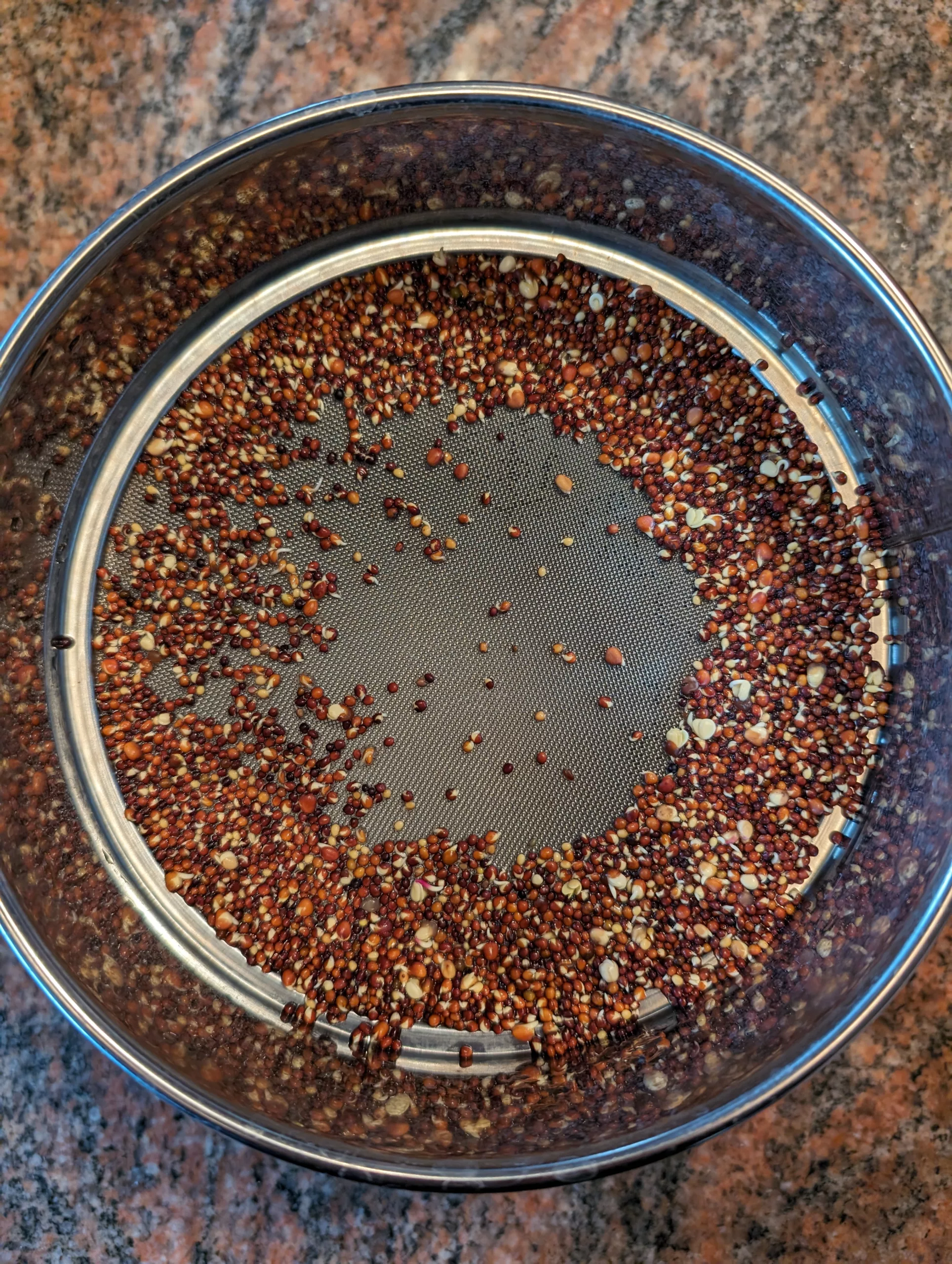Are these sprouts? Are these microgreens? Is their a difference between the two? The answer is: Yes there is a difference. I grow both and if you keep reading, I’ll describe how they differ and which one in my opinion is the overall winner in the Sprouts vs. Microgreens battle.
Growing Sprouts vs. Microgreens
So why would anyone want to grow sprouts or microgreens, especially instead of a full grown plant of the same variety? There are some easy answers here and some others that are more nuanced.
Lack of Space
Probably the most obvious reason for growing either of these is a lack of gardening space. Many of the varieties used for both sprouts and microgreens would require feet of space just for a few plants. You could grow hundreds or thousands of sprouts or microgreens in this same amount of space.
Lack of Time
Another reason for growing sprouts or microgreens is a lack of time. For full grown plants, you will need a month or more from seeding time before you can actually harvest. Harvest times for sprouts and microgreens are on the order of days/weeks.
Lack of Cooperative Weather
Due to the space and time saving benefits of growing sprouts and microgreens, you can make due with less than ideal weather conditions. This is mostly because you can easily grow them in your kitchen. Unlike growing full grown plants the need for bright light and always warm conditions is not necessary.
Differences in Sprouts vs. Microgreens
Before growing sprouts and microgreens, you need to decide which product you ultimately want to harvest. The following factors should be considered:
Taste
Different varieties of sprouts often taste very similar. Microgreens have more flavor, often this is a more pronounced flavor from the fully grown plant.
Intended Use
Sprouts are often served as a garnish. Microgreens can be combined to form a salad on their own, or used in much the same way as the greens from their fully grown counterparts. Both can be used in smoothies. It is recommended that you don’t cook microgreens as this will often degrade the nutrients that are present.
Nutrition
Sprouts will only provide the nutritional aspects of what is included in the raw seed. This differs greatly based on the variety of seed used. Many sources state that the sprouting process makes these vitamins and minerals more concentrated and available. Microgreens typically provide more minerals and often a different nutritional profile than their sprouted counterparts. I’ll discuss why this is when discussing differences in the growing process.
How to Grow Sprouts and Microgreens?
Growing either sprouts or microgreens is a fairly similar process. In both cases, you start with the same seeds that you would plant in your garden. Commonly used seeds include brassicas, radishes, grasses, beets, herbs and other greens. In both cases you provide a wet growing environment, but this is where the process starts to differ.
Growing Medium
For sprouts, you just need a container that allows you to store your seeds in a way that you can rinse them a few times a day and then let the water drain from the seeds. Microgreens require a ‘medium’ to grow in. This medium can be soil, but I like to use hemp or felt pads in a hydroponic environment. The purpose of this medium is to supply additional nutrients to the plants so that they can grow beyond the ‘sprout’ stage.
Light Requirements
Sprouts don’t really require any light. I tend to finish mine for a few days with indirect light just to make them look nicer. This can be as simple as leaving them uncovered on a kitchen counter. Because microgreens are grown into small versions of their typical plant size, a bit more light is required. This is one of the reasons for the difference in nutritional aspects between sprouts and microgreens of the same plant variety. Microgreens are undergoing more photosynthesis. This combined with the added nutrients in the growing medium changes the nutritional profile of the microgreen.
Time to Harvest
Sprouts are ready to harvest in a few days. Once the seed is broken open and a stem and root system are beginning, you can harvest at any time. Microgreens take a week or more. With microgreens you want to wait to harvest until the first ‘real’ sets of leaves appear. When harvesting, you want to eat the entire sprout, stem, root, etc. You want to discard everything in the growing medium with microgreens and only eat the actual stem/greens.
The Sprouts vs. Microgreens Winner
So who is the winner of Sprouts Vs. Microgreens? For me, it’s sprouts. I like the quick turn around time and the overall simplicity. I also like the versatility of being able to add them to almost anything. Many others are scared away from sprouts because of the chance that the growing environment can be a breeding ground for bacteria and mold. If this is you, I have a few recommendations:
- Always rinse with cold water. Not using warm/hot water helps keep the environment good for sprouts and bad for the nasties.
- Make sure your seeds are adequately spaced and drain properly in between waterings.
- Buy seeds from a reputable place. Starting with high quality seeds that aren’t already contaminated is a great idea.
- Visually inspect the environment before each watering. A quick check for mold or bacterial growth before each watering will allow you to abandon your sprouts the moment you know something is wrong. Just don’t confuse some ‘fuzziness’ of the early roots for mold 😁
- If you don’t feel confident doing these things… Grow Microgreens instead!

Leave a Reply